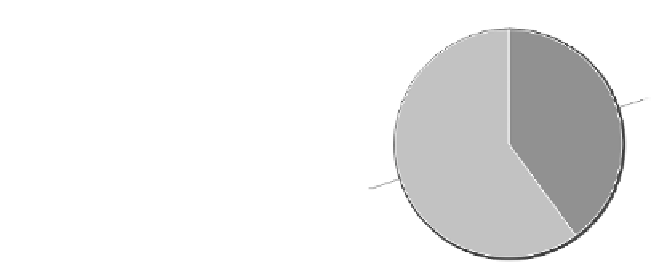Information Technology Reference
In-Depth Information
Longer pages
(more context)
40.4%
Pages spread across more
screens (less context)
60.0%
FIGURE 8.48
Preference of textual presentation in the Czech sample.
Czech
Results summary.
The majority of the respondents (60%) chose shorter pages, because they allow for
quicker orientation, navigation, and do not force users to read all the information, if
they choose, by providing snippets of text. Longer pages were preferred by 40% of
the respondents. The reasons were that the users feel more stability and do not need
to click, just scroll down. (See Figure 8.48.)
Discussion/conclusion.
The hypothesis was not supported by the results. Although many popular websites
contain long texts and few images, the reason is not so much cultural, as it is technical
and usability-related. Still, the majority of the respondents would prefer websites with
shorter pages, which held true for both of the interviewed groups.
45) Please look at the following icons. What kind of applications would you
connect with them?
Chinese
Hypothesis.
Icons with symbols coming from users' own cultural background are better perceived
and understood, than those from a foreign culture.
The respondents were presented with Chinese and international applications
icons:
•
First row: Chinese application icons (C)
•
Second row: international application icons (W)
Results summary.
The Western set of icons scored better compared to the Chinese set. The meaning
of the movie player icon was recognized by all of the respondents (W3: 100%),
followed by the editing tool (W1: 89%), the encryption tool (W4: 84%), and the helmet
(W2: 32%). The meaning of the five-input method was recognized by most of the
respondents (C1: 95%), followed by the chess game (C4: 74%), the hammer and scythe








Search WWH ::

Custom Search